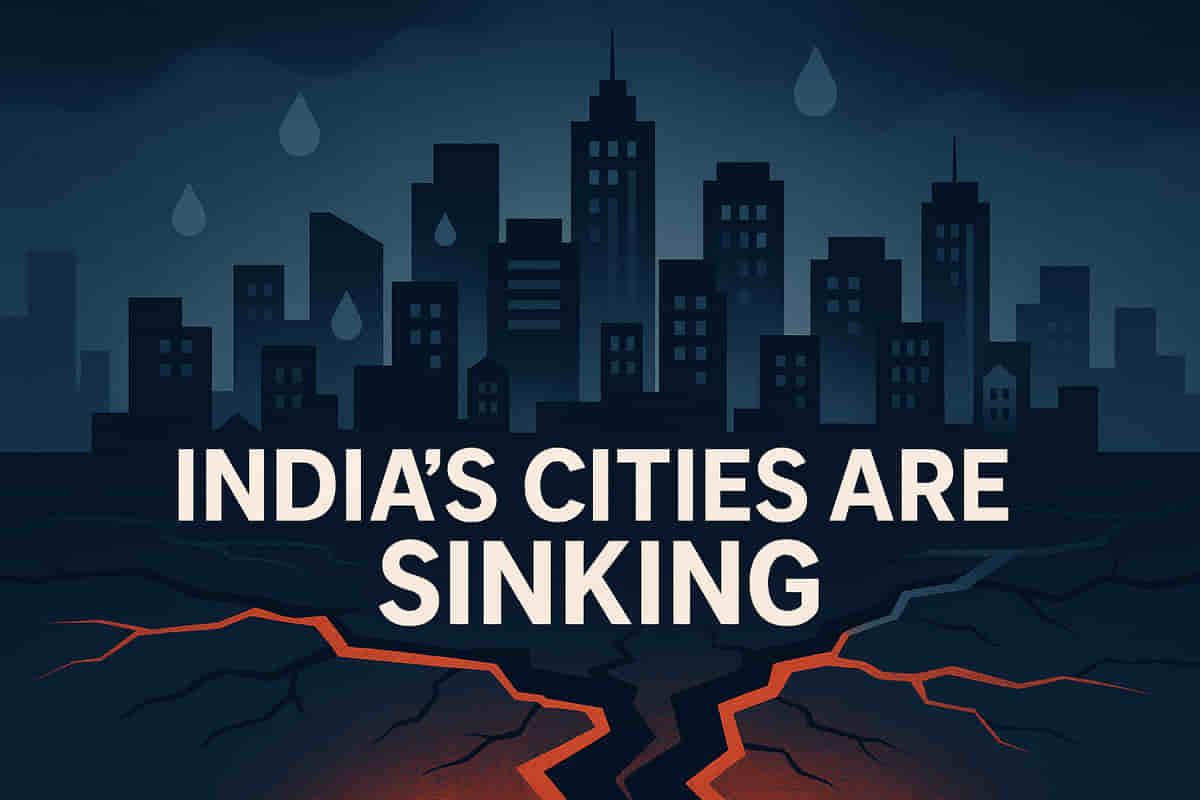Indian Megacities Face Severe Land Subsidence Risk Due to Excessive Groundwater Extraction, Study Warns
Environment
|
30th October 2025, 10:04 AM

▶
Short Description :
Detailed Coverage :
A recent study published on October 28, 2025, highlights a serious issue of land subsidence affecting five fast-growing Indian megacities: Delhi (NCT), Mumbai, Kolkata, Bengaluru, and Chennai. The analysis, using data from 2015-2023, found that 878 square kilometers of urban land are subsiding, with nearly 1.9 million people exposed to subsidence rates exceeding four millimeters per year. Widespread subsidence was observed across all cities, with Delhi experiencing the highest rates (up to 51.0 mm/yr), followed by Chennai (31.7 mm/yr) and Mumbai (26.1 mm/yr). The primary cause identified is the excessive extraction of groundwater, leading to the compaction of underlying soil and rock layers, particularly alluvial deposits. In some areas like Dwarka, Delhi, localized uplift has been observed due to successful aquifer recharge initiatives. However, the study projects that thousands of buildings face high to very high risks of structural damage due to subsidence in the next 30 to 50 years, with Chennai showing particularly high future risk. Mitigation strategies include new regulations on groundwater extraction, improved surface water management, and groundwater recharge efforts.
Impact This news has a significant impact on the Indian stock market, particularly affecting sectors such as real estate, construction, infrastructure development, and insurance. Increased risks from land subsidence can lead to higher construction costs, insurance premiums, and potential devaluation of properties in affected areas. Urban planning and government infrastructure spending may also be redirected to address these challenges. Rating: 8/10.
Difficult Terms: Land Subsidence: The gradual sinking or settling of the ground surface. Groundwater Extraction: The process of pumping water out from underground aquifers. Differential Settlements: Uneven sinking of different parts of a structure or land. Alluvial Deposits: Sediments (like clay, silt, sand) deposited by rivers. Holocene Fluvial Sediments: Sediments deposited by rivers during the Holocene epoch (the last ~11,700 years). Pleistocene and Holocene Sediments: Sediments deposited during the Pleistocene epoch (approx. 2.6 million to 11,700 years ago) and the Holocene epoch. Igneous and Metamorphic Rocks: Rocks formed from molten lava (igneous) or transformed by heat and pressure (metamorphic). Aquifer Recharge: The process by which groundwater is replenished.